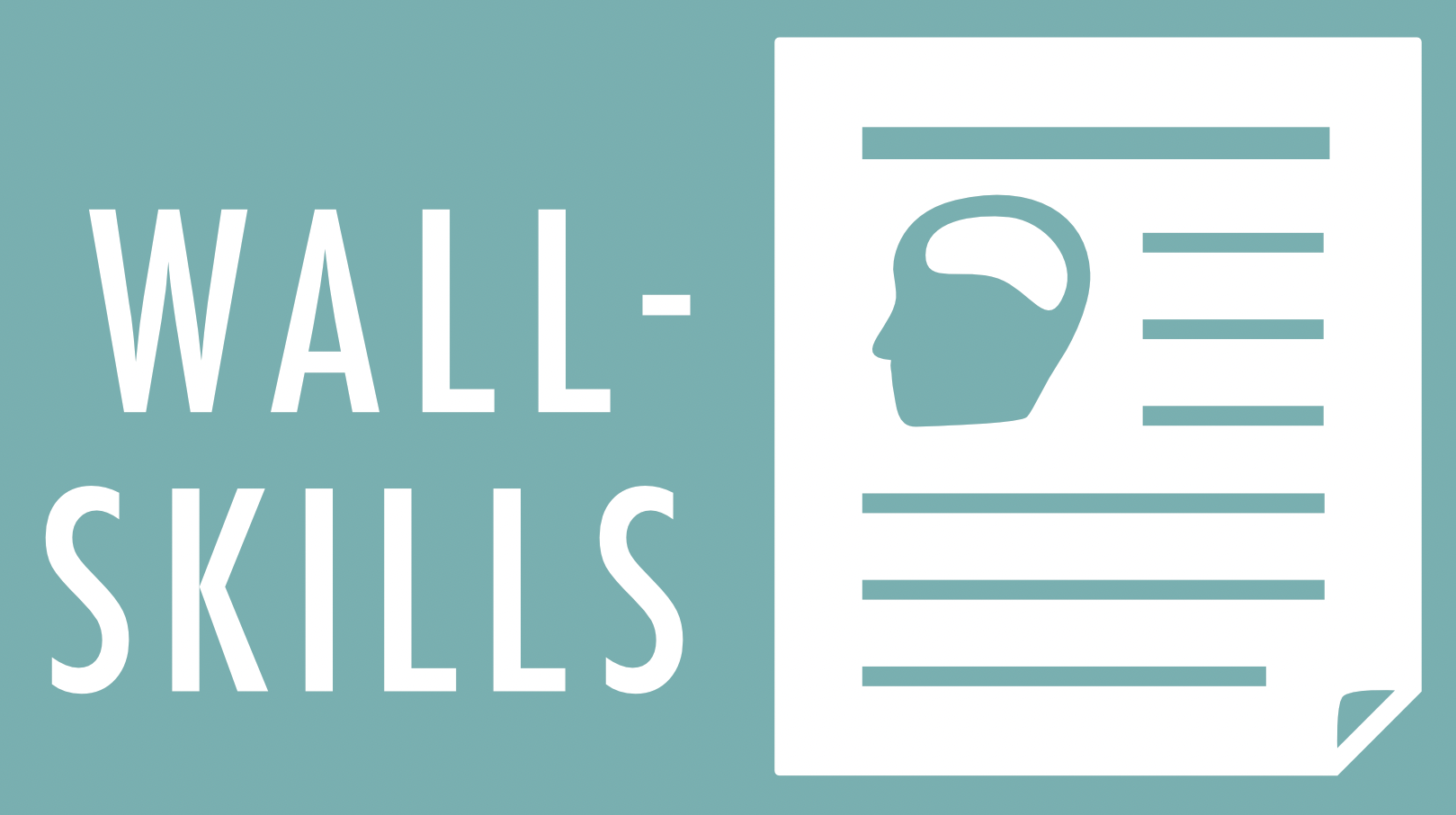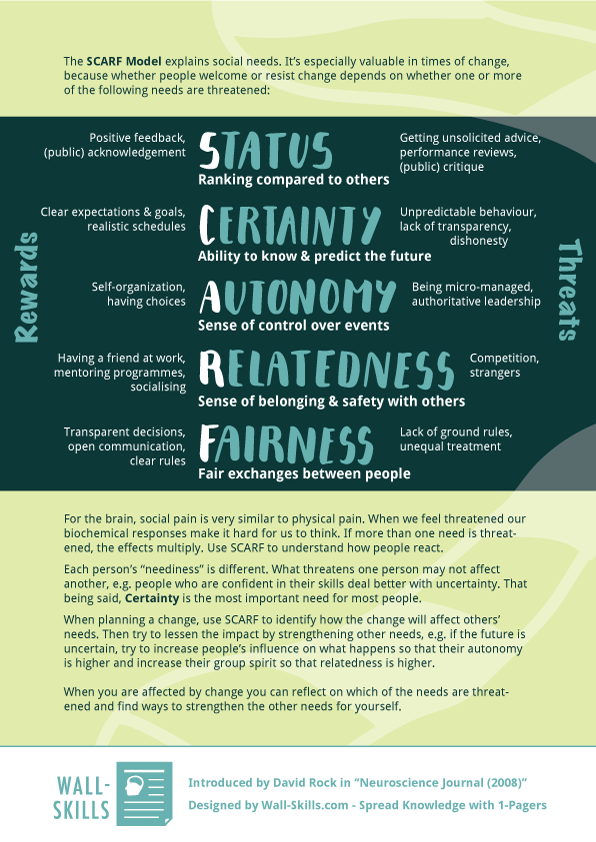Have you ever surprised people with a change you thought was good and then they throw it in your face? Thinking through that change beforehand with the SCARF model might have helped: The SCARF Model explains basic social needs. It’s especially valuable in times of change, because whether people welcome or resist change depends on whether one or more of the 5 needs are threatened.
Check out the 1-pager for more:
Are you a budding Product Owner? Check out our compilation "Skills for Successful Product Owners"
Content of 1-Pager:
The SCARF Model explains social needs. It’s especially valuable in times of change, because whether people welcome or resist change depends on whether one or more of the following needs are threatened:
- Status
Ranking compared to others - Certainty
Ability to know & predict the future - Autonomy
Sense of control over events - Relatedness
Sense of belonging and safety with others - Fairness
Fair exchanges between people
[The 1-pager details has examples for threats and rewards for each need]
For the brain, social pain is very similar to physical pain. When we feel threatened our biochemical responses make it hard for us to think. If more than one need is threatened, the effects multiply. Use SCARF to understand how people react.
Each person’s “neediness” is different. What threatens one person may not affect another, e.g. people who are confident in their skills deal better with uncertainty. That being said, Certainty is the most important need for most people.
When planning a change, use SCARF to identify how the change will affect others’ needs. Then try to lessen the impact by strengthening other needs, e.g. if the future is uncertain, try to increase people’s influence on what happens so that their autonomy is higher and increase their group spirit so that relatedness is higher.
When you are affected by change you can reflect on which of the needs are threatened and find ways to strengthen the other needs for yourself.
Sources:
- The SCARF model was introduced by David Rock in “Neuroscience Journal” in 2008
- Corinna learned the model in the workshop “Führen und Coachen von agilen Teams” (highly recommended!) by Veronika Kotrba and Ralph Miarka and their book “Agile Teams lösungsfokussiert coachen“
- The following infographics filled in some details:
- https://www.slideshare.net/wildapricot/tja-onboarding-volunteers-wild-apricot-slides-final
- https://www.jvracademy.co.za/wp-content/uploads/2013/05/SCARF-table.png
- http://tamkjournal-en.tamk.fi/how-to-apply-the-principles-of-neuroscience-in-your-daily-leadership-work-avoid-typical-pitfalls-enhance-productivity-and-reach-your-goals-more-easily-by-using-your-brain-right/


Emma 2018/07/18
Am I misunderstanding the 1 pager… the threats and rewards for fairness appear the wrong way round to me?
Corinna 2019/08/14 — Post Author
Yes, thank you, fixed that
Andrew Hart 2021/08/09
Typo in the first “whether” in para 1
Corinna 2022/06/05 — Post Author
Thank you, Andrew. Fixed both typos 🙂
Andrew Hart 2021/08/09
As is “valueable”
Udo 2022/07/04
Again, the key facts on Wall-Skills just helped me to freshen up concepts like SCARF.
Thanks for all your work, Corinna! Much appreciated.
Udo